
All Points East 2024 – discover the artists
The big summer music events in Victoria Park
In September, Phoebe Riley, a textile design student at Central Saint Martins posted a TikTok calling all “diy girlies, fashion and textile students” to come and find cheap materials at Hackney Wick’s textile reuse hub, Yodomo.
They works with brands including Vivienne Westwood and Nike to reduce waste by selling their offcut materials (at affordable prices) to foster a more sustainable and circular economy. Yodomo provides fabrics, swatches, buttons and yarns, not only appealing to the craft market, but also students from Central Saint Martins, London College of Fashion, Ravensbourne, Royal College of Art, Westminster, Loughborough and UCL.
Sophie Rochester, who founded Yodomo back in 2017, has noticed wider interest now coming from students “across the board, who all have an interest in sustainability” compared to their previous demographic of customers who would already be working within circular practices. But it’s not just the fashion students that are utilising Yodomo’s resources; material research, art, interior design and architecture students are learning that their industries “go under the radar for textile waste.”
Rochester adds, “there’s been a big shift in teaching and involving sustainable practices on all courses… students come here and want to build reuse in their practices.”
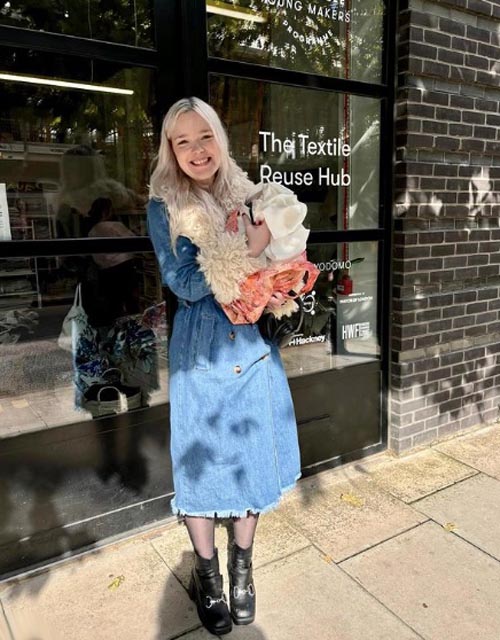
Yodomo have visited the partnerships team at Central Saint Martins to ensure tutors and technicians communicate with students about their services, and also work with London College of Fashion’s technicians and materials shop, who receive excess leather, yarns and fabrics.
“While the technicians want to offer materials at the university, they also want to encourage students to source and familiarise themselves with the process of asking about materials, I’m definitely getting those questions now,” Rochester says.
Yodomo also leads the Sustainable Young Makers programme, which is supported by Hackney Wick, Fish Island Community Development Trust (CDT) and The Trampery.
The initiative encourages young people – not necessarily students or graduates – who design clothes or employ specific crafts. They are then enrolled on a business development programme, assigned to industry mentors, and connected with Yodomo’s materials, and therefore, what they can learn and design from them.
“There’s quite a disconnect about what is possible as an individual designer and a student versus being in the real world and having to apply those sustainable principles at a big brand and realising a lot of those can’t be carried out,” Rochester reveals, as she explains how Yodomo’s programme addresses those problems and challenges.
As the pressure for sustainable means of making increases across all industries and levels, the rise of textile reuse hubs is offering students both a cheaper and more conscious alternative. In October, a BBC report found that burning household rubbish in giant incinerators to make electricity is now the dirtiest way the UK generates power. In 2022 it was reported that textiles were the second largest polluter with the UK generating 1.45 million tonnes of textile waste (nearly the same amount as of the clothes bought that year).
CSM student Phoebe Riley, whose video has since attracted 24.4K views on TikTok, first heard of Yodomo in her second year, working on a group sustainability project. “We are constantly being told to find more sustainable alternatives,” she tells us. “Finding a way to source materials sustainably is also about being creative and taking initiative.”
Phoebe is one student amongst her vast cohort who is creating with sustainable practices at the forefront of their process. She says, “as creatives of the future, the responsibility falls on us to learn about how we can improve the textiles industry. It’s important to learn about it now, so I can apply it to my practice for the rest of my life.”
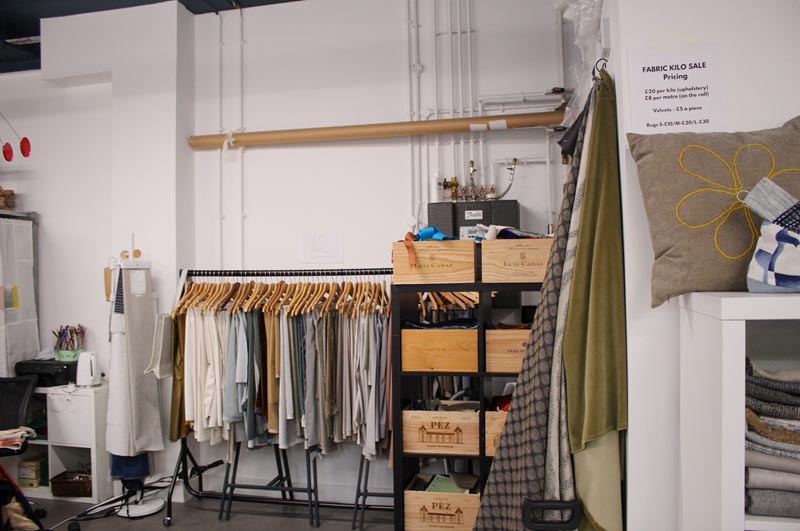
Phoebe also mentioned Renée Materials, the hybrid marketplace based in Hackney and Shoreditch that not only provides textiles but materials for graphic design, architecture and fine art students. “The deadstock industry is very focused on fashion, but it’s important to think about the other aspects… sustainability is about building a community,” Lara López Ayuso from Renée Materials says.
With the many avenues of sustainable practices, her organisation tackles the question of ‘what can we do with all of this production?’
“We think about how we can prolong the life of a material, it enables the creative mind to think about how materials can be repurposed,” Lara explains. The students she sees coming in to Renée Materials are “becoming more conscious about the undeniable fact of climate change. It’s part of our everyday life.”
Rosie Scott, co-founder of designer leftover fabric and haberdashery shop, New Craft House near London Fields similarly remarks, “everyone is becoming more aware of sustainability. Fashion is such a wasteful industry, so it makes sense that students are making that choice. There are so many materials, it doesn’t have to be a compromise anymore.”
Since starting as a workshop studio in 2013 and then going on to sell fabrics in 2019, Rose has noticed the recent shift in customers, “now it’s becoming more fashion-focused” in comparison to home projects.
New Craft House partners with London College of Fashion and invites first year students into their studio space to explain their service of sourcing fabrics bought directly from designers’ leftovers, not overproduced at a mill, and are funding a competition for three final year students’ collections this year for the first time.
Organisations like Yodomo, Renée Materials and New Craft House are supporting student voices charging the textile industry towards a more sustainable future. The next challenge for university tutors to tackle is where the future of the industry is heading and what jobs will be available for students.
As Sophie Rochester advises, “the best thing to consider is where the industry is now, and where it can be. How do we create the new generation of people working in textiles, that’s a responsibility for everyone from brands, industry, academia and students.”

The big summer music events in Victoria Park

It’s the place to find out how you can get involved in the big summer festival activity in Victoria Park
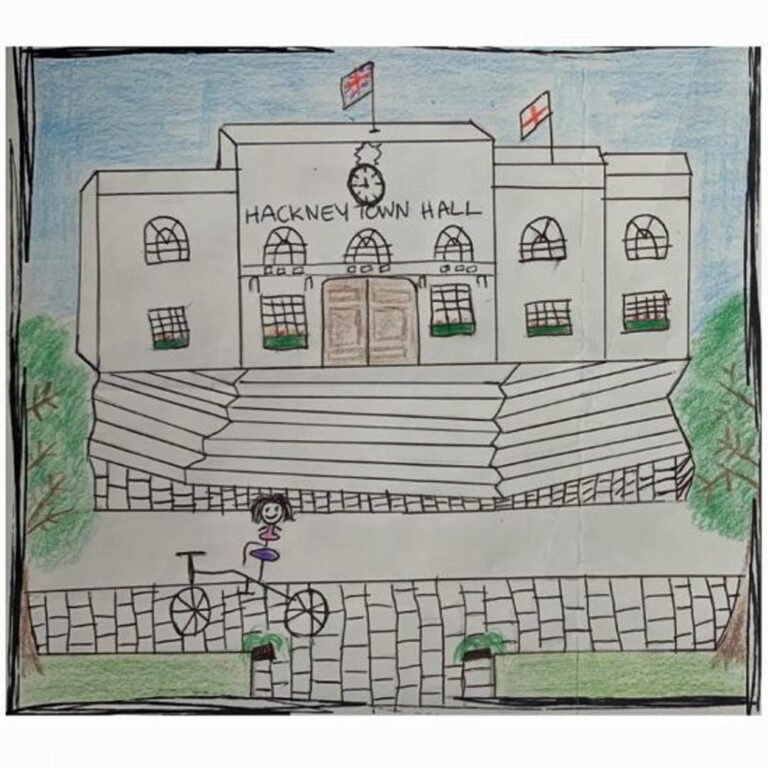
Cyclists want Caroline Woodley to make the borough even more friendly for two-wheeled travel
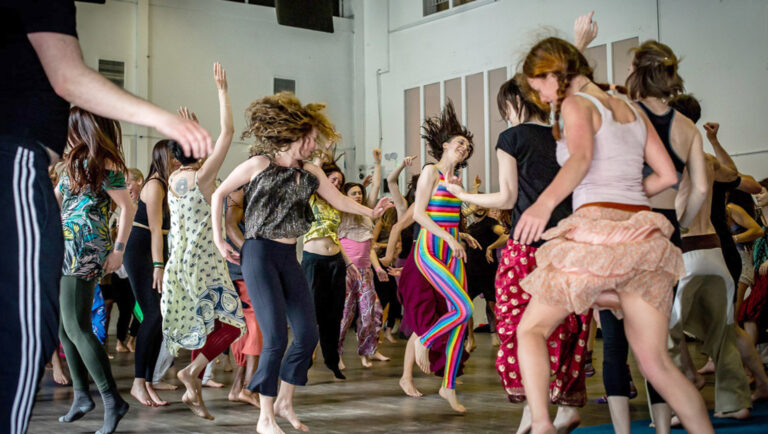
When an area changes as rapidly as Hackney Wick today, it can place a range of stresses on our wellbeing. But help is close at hand
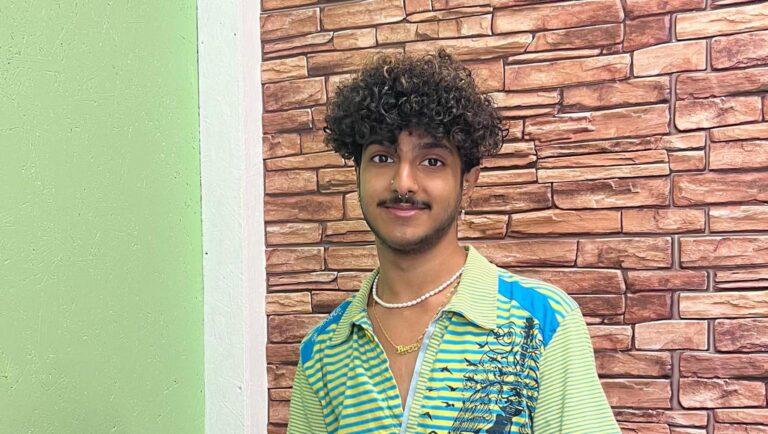
Meet the teen entrepreneur who turned his lockdown dog-walking venture into a fully-fledged retail business
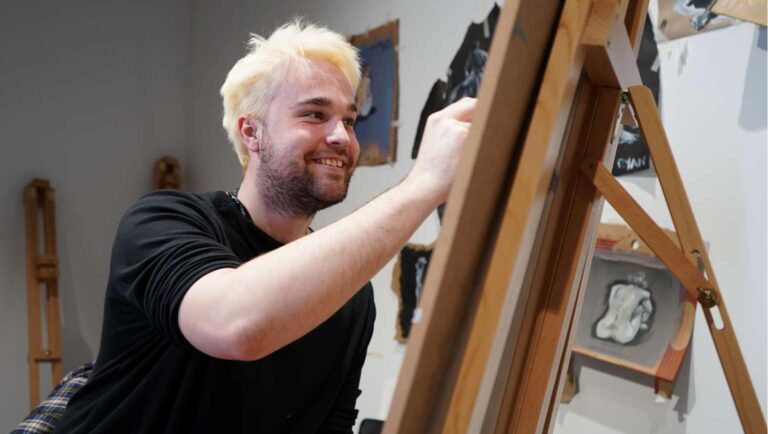
No less than six world class universities have now gravitated to establish campuses on the Queen Elizabeth Olympic Park, offering an inspiring range of courses
A 160-page hardback celebration of resilience, featuring hundreds of photos, stories and memories: 15 years of culture, community and change